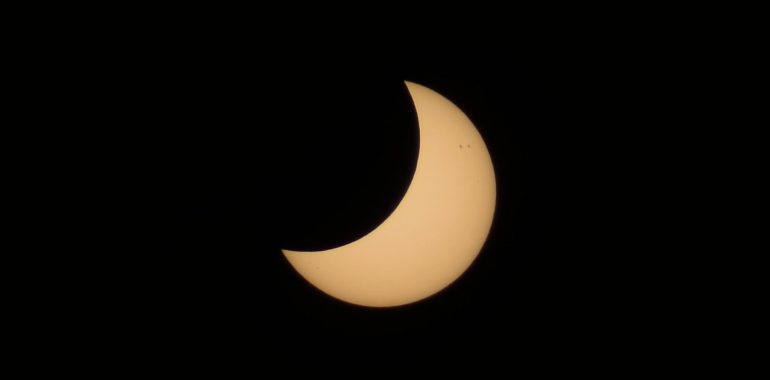Solar Eclipse 2025: When and Where to Watch

Solar Eclipse 2025: When and Where to Watch
A partial solar eclipse will occur over parts of the northeastern United States and Canada on the morning of Saturday, March 29, 2025. Early regional risers will witness a rare celestial event as the moon partially covers the sun, creating dramatic views in the dawn sky.
The eclipse will begin around 4:50 a.m. Eastern Daylight Time and continue until just before 8:43 a.m. The sun will rise but will be partially eclipsed in many locations.
Visibility and timing will vary depending on location, with some of the most dramatic views expected in St. John’s, Newfoundland and Labrador, where the eclipse will peak at approximately 7:53 a.m. EDT. At its maximum, the moon will cover up to 93% of the sun’s visible surface in certain areas.
What to expect?
A partial solar eclipse happens when the moon moves between the Earth and the Sun but does not fully block the sunlight. The result is a crescent-shaped sun, a formation some observers describe as resembling “devil’s horns.”

Unlike a total eclipse, this event will not bring sudden darkness or reveal the sun’s outer atmosphere, known as the corona. However, it remains a remarkable and uncommon sight that millions across North America will have the chance to see.
How to protect your eyes?
Experts strongly advise against looking at the eclipse without proper eye protection. Even during a partial eclipse, the visible portion of the sun emits intense rays that can cause permanent eye damage.
The American Optometric Association warns that direct exposure can lead to “eclipse blindness,” a condition that damages the retina and may result in lasting vision loss.
To view the eclipse safely, observers should wear solar eclipse glasses that meet the ISO 12312-2 international safety standard. These glasses are designed to filter harmful rays and are far darker than regular sunglasses.
NASA also cautions against using cameras, binoculars, or telescopes to view the sun without certified solar filters. These devices can concentrate sunlight and burn through standard filters, increasing the risk of serious injury.
How to watch online?
Those without eclipse glasses or outside the viewing area can still experience the event through several free online streams. Timeanddate.com and the Royal Observatory Greenwich will begin live broadcasts at 5:30 a.m. EDT.
The streams will feature views from locations worldwide, including North America. If weather conditions allow, St. John’s is expected to provide one of the clearest visuals of the eclipse at its peak.
A rare moment in the sky
Though not as dramatic as a total eclipse, Saturday’s event offers a captivating glimpse into the mechanics of our solar system. Viewers can safely enjoy one of nature’s most striking spectacles with the right precautions or a reliable live stream.